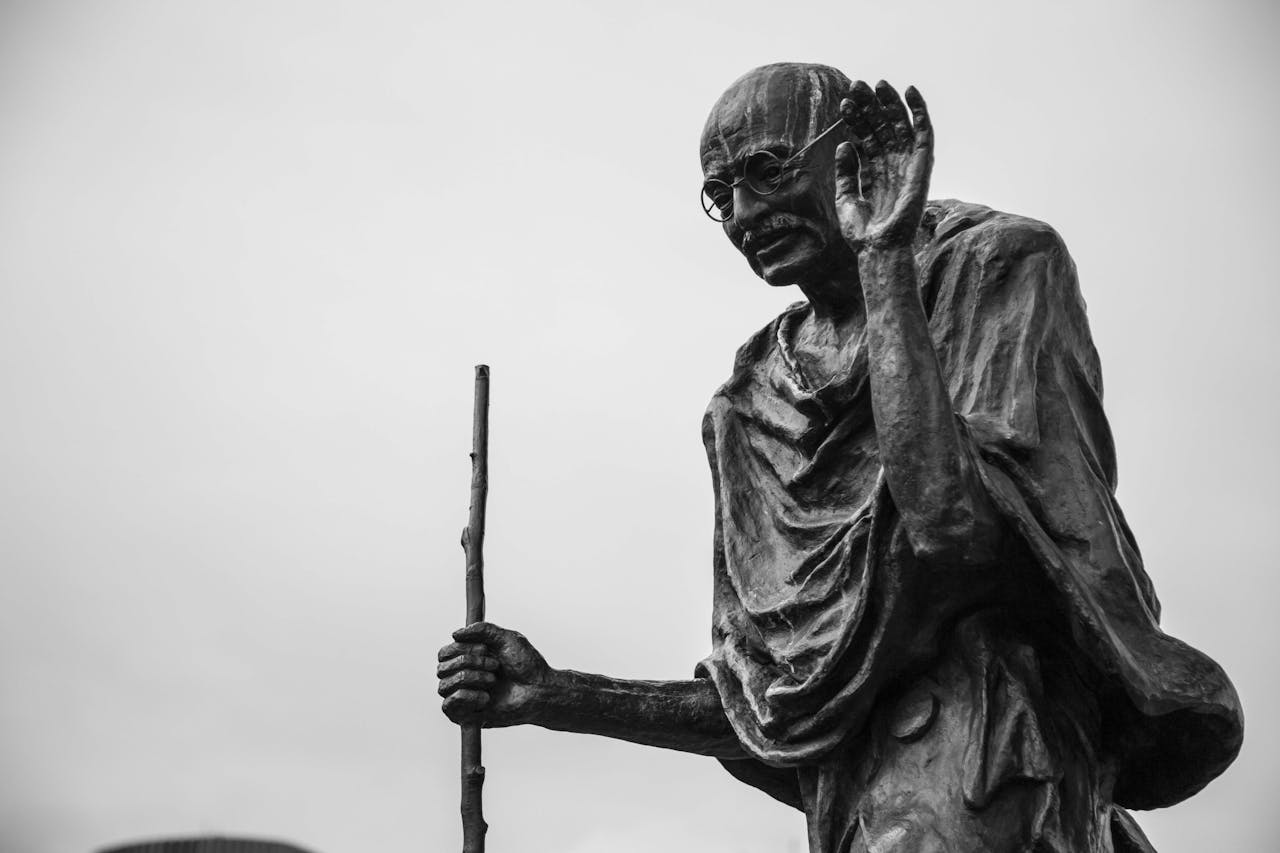
After being under colonial rule for almost 200 years, India gained independence on 15 August 1947. But it didn’t happen overnight. A long and grueling struggle led by the freedom fighters of India forced the British to back down and set India free. In this article, we will introduce you to the top 10 freedom fighters of India. The Indian freedom fighters listed in this article, along with many others, commissioned an unabating revolution against British rule, choreographed through non-violence, violent battles, marches, demonstrations, and movements.
Here is the list of the top 10 freedom fighters of India.
The father of the nation, Mahatma Gandhi, is the most noted figure in the Indian Independence Movement. He led the Champaran Movement (1917), the Kheda Movement (1918), the Non-Cooperation Movement (1920), the Khilafat Movement (1920), the Civil Disobedience Movement (1930), and the Quit India Movement (1942).
His relentless efforts to free India from colonial rule inspired generations to participate in the struggle for independence.
His contributions to the movement go far beyond showing strong resistance against British rule. He reformed the nation in social, political, and moral domains. A preacher of non-violence, truth, communal harmony, discipline, and peace, his teachings still echo in this world.
Pt. Jawaharlal Nehru was another prominent Indian nationalist. His interest in national politics was piqued while he was practicing law in Allahabad. Greatly influenced by Mahatma Gandhi, he became a leading force in India’s struggle for independence. He played pivotal roles in several movements.
The first prime minister of independent India, Jawaharlal Nehru was the architect of modern India. He was one of the few progressive leaders who promoted secularism, parliamentary democracy, industrialization, and economic development.
Subhas Chandra Bose is the name behind the popular slogans “Give me blood, and I will give you freedom” and “Delhi Chalo”. His revolutionary stance in the struggle for freedom established him as a fearless and dynamic fighter. He encouraged a militant approach to fight against the British.
Also called “Netaji”, he sought international support and established Azad Hind Fauj, the first INA (Indian National Army) and the Azad Hind Government.
Bhagat Singh is one of the most prominent freedom fighters of India. His revolutionary approach towards the struggle for independence and his martyrdom inspired youths to participate in the Indian Independence Movement.
Bhagat Singh was an important part of HSRA (Hindustan Socialist Republican Association). He played a key role in several revolutionary events, like the bombing of the Central Legislative Assembly, the murder of J.P. Saunders (mistaking him for James A. Scott) and the hunger strike in the jail.
Bhagat Singh was executed along with Sukhdev and Rajguru on 23 March 1931.
The “Iron Man of India”, Sardar Vallabhbhai Patel orchestrated the unification of the nation by integrating princely states into India after independence.
A leading face in movements like Quit India, Satyagraha, and the Non-Cooperation movement, Sardar Patel demonstrated excellent leadership throughout India’s struggle for independence.
He became the first Home Minister and the first Deputy Prime Minister of free India.
Rani Lakshmi Bai, or Rani of Jhansi, showcased her fervor and bravery in the rebellion of 1857. The warrior queen refused to give away her princely state to the British.
She defended her city in combat and continued the resistance with other rebellious leaders to defend Gwalior and Kalpi.
Rani Lakshmi Bai died in the Battle of Gwalior while protecting her motherland from colonial rule.
Mangal Pandey is one of the first Indian freedom fighters. He is the unsung hero of the first war of independence in 1857. A sepoy, he sparked the Indian Mutiny, which led to the dissolution of the East India Company and the establishment of the British Raj.
Executed on 8th April 1857, his actions inspired many figures in the Indian Nationalist Movement.
One of the most dynamic members of HSRA (Hindustan Socialist Republican Association), Chandra Shekhar Azad is named among the top 10 freedom fighters of India.
He was involved in several rebellious acts like the shooting of John P. Saunders, the Kakori train robbery, and the plan to blow up the train of the Viceroy of India.
For several years he threw the police off the scent. On February 27, 1931, he shot himself after being surrounded by police at Alfred Park in Allahabad.
Also known as Maulana Azad, Maulana Abul Kalam Azad was another revolutionary in the Indian independence movement. A senior leader of INC, he was the first Minister of Education of free India.
He was an active participant in many nationalist movements, including the Quit India Movement, Dandi March, and Khilafat Movement.
Also a noted writer, he has several literary works to his credit.
The “Lion of Punjab”, Lala Lajpat Rai was a key contributor to the Swadeshi Movement, Non-Cooperation Movement, Anti-Simon Commission Protest, and Home Rule Movement. He, along with Bal Gangadhar Tilak and Bipin Chandra Pal, formed the extremist part of Congress.
Lala Lajpat Rai also voiced his opinions through his pen by actively writing on social and political issues.
The freedom fighters story in English serves as a powerful reminder of the courage, sacrifice, and unwavering determination shown by the heroes who fought for the independence of our country.
From Mahatma Gandhi’s peaceful resistance to Bhagat Singh’s fearless revolution, each of these freedom fighters of India played a vital role in shaping India’s destiny. Their legacy will forever continue to inspire generations to come.